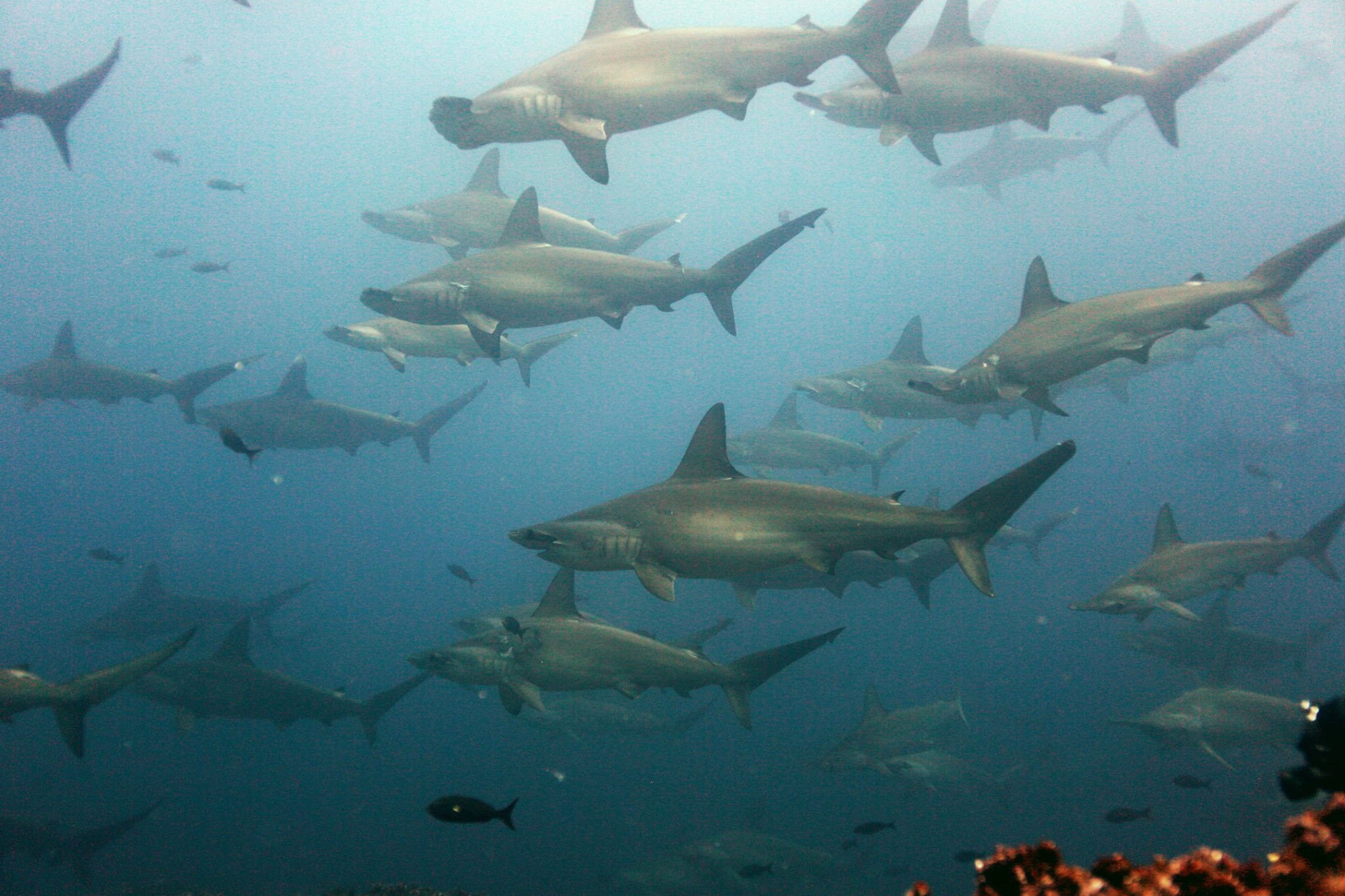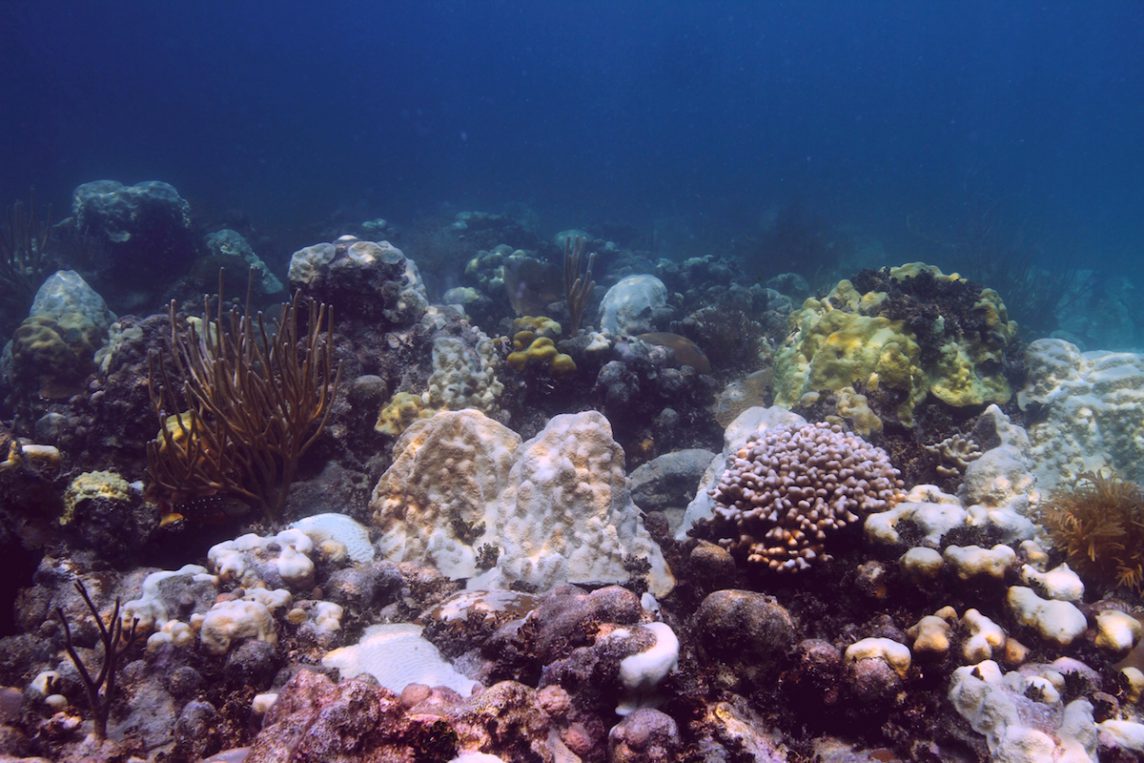Few accessible places represent Earth’s natural beauty quite like our beaches, but looks can be deceiving if there is a bacterial outbreak or contamination from offshore activities. Not being able to see these contaminants puts families at risk of exposure if they aren’t properly warned. The BEACHES project (Beach Exposure And Child Health Study), a collaboration between the University of Miami’s College of Engineering and the Cooperative Institute for Marine and Atmospheric Studies and AOML, along with the Universities of Arkansas and Texas, aims to pair child behavioral science with microbiology to address exposure risk of beachgoers.
Coral Reefs will be Unable to Keep Pace with Sea-Level Rise
NOAA contributed to a study published today in the journal Nature that compares the upward growth rates of coral reefs with predicted rates of sea-level rise and found many reefs would be submerged in water so deep it will hamper their growth and survival. The study was done by an international team of scientists led by the University of Exeter in the United Kingdom.
Climate Change to Drive More Extreme Heat Waves in the United States
A new analysis of heat wave patterns appearing in Nature Climate Change focuses on four regions of the United States where human-caused climate change will ultimately overtake natural variability as the main driver of heat waves. Climate change will drive more frequent and extreme summer heat waves in the Western United States by late 2020’s, the Great Lakes region by mid 2030’s, and in the northern and southern Plains by 2050’s and 2070’s, respectively.
“These are the years that climate change outweighs natural variability as the cause of heat waves in these regions,” said Hosmay Lopez, a meteorologist at NOAA’s Atlantic Oceanographic Meteorological Laboratory and the University of Miami’s Rosenstiel School Cooperative Institute for Marine and Atmospheric Studies and lead author of the study. “Without human influence, half of the extreme heat waves projected to occur in the future wouldn’t happen.”
Researchers Explore Coral Resiliency in New Experimental Reef Laboratory
Coral researchers at AOML unveiled a new state of the art experimental laboratory this spring at the University of Miami’s Rosenstiel campus. The new “Experimental Reef Laboratory” will allow NOAA scientists and colleagues to study the molecular mechanisms of coral resiliency. Modeling studies indicate that thermal stress and ocean acidification will worsen in the coming decades. Scientists designed the Experimental Reef Laboratory to study the combined effect of these two threats, and determine if some corals are able to persist in a changing environment.
Galapagos Islands: A Telling Study Site for Coral Reef Scientists
Coral scientists recently traveled to the Galapagos Islands to document coral reef health following the 2016-17 El Niño Southern Oscillation event (ENSO), which bathed the region in abnormally warm waters. Historically, these events have triggered coral bleaching and large-scale mortality, as seen in response to ENSO events of 1982-83 and 1997-98. Interestingly, these same reefs exhibited minimal bleaching in response to this most recent event. Scientists are determining whether this response is due to differing levels of heat stress, or an increased tolerance to warm water in the remnant coral communities.
AOML Leads Research Efforts Across Caribbean to Improve Bleaching Predictions
For the third time in recorded history, a massive coral bleaching event is unfolding throughout the world’s oceans, stretching from the Indian Ocean to the Caribbean. Above average sea surface temperatures exacerbated by a strong El Niño could result in the planet losing up to 4,500 square miles of coral this year alone, according to NOAA. The global event is predicted to continue to impact reefs into the spring of 2016.
New Tools Bring Ecosystem Benefits to the Forefront of Decision Making
The Marine and Estuarine Goal Setting for South Florida (MARES) project, led by NOAA’s Cooperative Institute for Marine and Atmospheric Studies at the University of Miami, continues to increase awareness of and appreciation for the value of coastal marine ecosystems, and their impacts upon human society. From 2009 through 2013, NOAA’s National Centers for Coastal Ocean Science funded MARES with the goal of creating a consensus-based process for managing South Florida’s coastal marine environments. MARES is unique in that it was among the first major efforts to include human benefits in a systematic framework to enable integrated ecosystem based management. The MARES approach embodies NOAA’s effort to serve as the Nation’s environmental intelligence agency by providing actionable information from science-based models to support environmentally-sensitive decisions made every day by individuals, communities, and governments.
“NOAA took a leadership role in funding the MARES project, and it is a step in the right direction”, said Eric Millibrandt, director of the Marine Laboratory at Sanibel. “I’ve used the concepts provided by MARES to help colleagues and non-technical individuals to better understand the ecosystem and its preservation.”
When natural resource managers make decisions, it is important that they take both the needs of the environment, as well as human population requirements and perspectives into consideration. This integrated approach is necessary to sustain a physically and economically balanced and healthy ecosystem. Coastal populations rely on and interact with their unique marine and estuarine flora and fauna on a daily basis.
In the last century, increased population, coastal development, climate change and sea level rise have damaged South Florida’s marine environment. As these changes continue, the long-term status of South Florida’s ecosystems and valuable resources will continue degrading. The coastal habitat is crucial to the regional economy, which relies on ocean related jobs such as, fishing and tourism. Since a healthy ecosystem is needed for economic survival, the interactions between Florida’s population and the ecosystem is important and can be used to help guide the management decisions regarding South Florida’s coastal ecosystems.
Typically, research and management on marine ecosystems have focused primarily upon the negative impacts humans have on the environment. MARES investigators realized that for citizens to embrace marine policy, it is essential they understand not only the variety of pressures on the system, but the benefits they derive from it and their role within it. Over 50 researchers (both natural system and human dimensions scientists), managers, and stakeholders collaborated to understand and document cause and effect relationships and the societal benefits of South Florida’s coastal marine environments. By studying coastal waters in the Florida Keys/Dry Tortugas, the Southeast Florida Coast, and on the Southwest Florida Shelf, MARES was able to reach a consensus as to which regulating processes were most significant and which key characteristics must be sustained. The MARES team is publishing their findings in 15 research papers in a special issue (volume 44) of the journal Ecological Indicators entitled: “Tools to support ecosystem based management of South Florida’s coastal resources.”
The tools MARES developed are currently being used in community planning projects to show the existing status of the marine environment and to incorporate human benefits in ecosystem management. One of the most popular MARES products used by resource managers are the conceptual diagrams designed for the Southwest Florida Shelf, Southeast Florida Coast, and the Dry Tortugas/Florida Keys.

MARES conceptual diagram showing connections between FL Keys and Dry Tortugas
Additionally, NOAA’s National Marine Sanctuaries are evolving to include the MARES conceptual model framework in their guidelines. Sanctuaries’ Condition Reports currently provide a summary of resources in the Sanctuaries, pressures on those resources, the current condition and trends, and management responses to the pressures that threaten the integrity of the marine environment. Specifically, the current Condition Reports include information on the status and trends of water quality, habitat, living resources and maritime archaeological resources and the human activities that affect them. Future reports will be based on the MARES DPSER (Driver, Pressure, State, Ecosystem Services, Response) Model to clearly document ecosystem benefits to the public.
“MARES products and tools helped show us we need to integrate ecosystem services into our next generation of Conditions Reports said Bob Leeworthy, chief economist for NOAA’s Office of National Marine Sanctuaries. “These Next Generation Condition Reports will emphasize the value of services provided by ecosystems, all as a result of the MARES project.”





